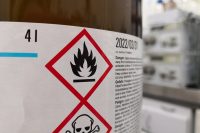3 Things EHS Managers Should Include in Their Hazard Communication Program
For the past four years, hazard communication has ranked in the top five for OSHA violations across every industry. In other words, organizations need to prioritize effective hazard communication programs. But there are many moving parts to a comprehensive program, and implementing one requires a commitment from everyone on your site. Here are three elements […]










